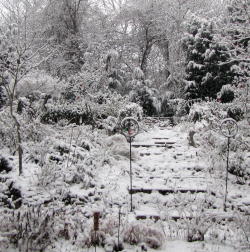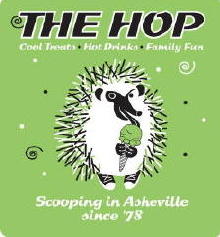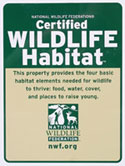.jpg) Trying to get these shots in the proper order by date and the size of the arborvitae, this is number one, I think. The driveway had just been paved, a very costly proposition with a nice curb along the edge. Grass had been planted in what is our only lawn area, a place for the offspring to frolic when visiting. Where the rosemary is now, down by the driveway, note there is a rhododendron. That very spot is where the scrap wood was burned during construction of the garage, no wonder the rhodies, two, died there. Wood ashes do not enhance the soil in an acidic way, they have the opposite effect. Somewhat shady, the rosemary has done well there.
Trying to get these shots in the proper order by date and the size of the arborvitae, this is number one, I think. The driveway had just been paved, a very costly proposition with a nice curb along the edge. Grass had been planted in what is our only lawn area, a place for the offspring to frolic when visiting. Where the rosemary is now, down by the driveway, note there is a rhododendron. That very spot is where the scrap wood was burned during construction of the garage, no wonder the rhodies, two, died there. Wood ashes do not enhance the soil in an acidic way, they have the opposite effect. Somewhat shady, the rosemary has done well there.
.jpg) Winter view of the first year, all plantings are small. Everything looks smaller in winter, do they shrink inward to protect themselves from the cold? It is known that the rhodie leaves curl in for added warmth.
Winter view of the first year, all plantings are small. Everything looks smaller in winter, do they shrink inward to protect themselves from the cold? It is known that the rhodie leaves curl in for added warmth.
.jpg) Hostas guacamole and sum and substance offer some chatreuse to brighten the spot come spring. The lawn needs mowing, as lawns do sometimes. Some growth has taken place, the arborvitae look taller.
Hostas guacamole and sum and substance offer some chatreuse to brighten the spot come spring. The lawn needs mowing, as lawns do sometimes. Some growth has taken place, the arborvitae look taller.
.jpg)
Things have grown in this August shot. An egg rock edging has been added and gives a river bed look and diverts water away from the structure and down to the driveway during heavy rains. Mexican sedum has filled in nicely by the driveway. Coleus give some color to this shady spot. The hostas are blooming, hummingbirds love these flowers, even though they are white. The lawn has been mowed. Rhododendron number two looks deceivingly healthy.
.jpg) Winter again, the lawn has been sprayed to enlarge the bed. The rhodos look terrible, but the evergreens are getting larger.
Winter again, the lawn has been sprayed to enlarge the bed. The rhodos look terrible, but the evergreens are getting larger.
.jpg) The Japanese maple has grown, one of the reasons the path was widened, to avoid that branch in the eye as you are looking down at the flowers instead of where you are walking. It happens. The garage has been attached to the main house now, eliminating the path that led to the back yard between the buildings. This is now the main way to the back, nice and wide and inviting. Those caldiums give some needed color here. The trees, shrubs and perennials have grown and give some substance to the big bare wall.
The Japanese maple has grown, one of the reasons the path was widened, to avoid that branch in the eye as you are looking down at the flowers instead of where you are walking. It happens. The garage has been attached to the main house now, eliminating the path that led to the back yard between the buildings. This is now the main way to the back, nice and wide and inviting. Those caldiums give some needed color here. The trees, shrubs and perennials have grown and give some substance to the big bare wall.
.jpg)
In October, the mum Sheffield Pink is a wow. The yellowing hosta foliage is a good color with the red dogwood and maple leaves. Steady Eddy blue from the junipers are living up to the name.
.jpg) I love the arborvitae, in spite of the ubiquity. Their form is so formal, compared to the blousy dogwood, rosemary and unpruned blue stars. The species tulips, T. vvedenskyi ‘Tangerine Beauty’ are marked with little scallops of the egg rock so they don’t get lost. Clumps of daffodils are almost ready to bloom, we need some color here!
I love the arborvitae, in spite of the ubiquity. Their form is so formal, compared to the blousy dogwood, rosemary and unpruned blue stars. The species tulips, T. vvedenskyi ‘Tangerine Beauty’ are marked with little scallops of the egg rock so they don’t get lost. Clumps of daffodils are almost ready to bloom, we need some color here!
.jpg) April 2007, known forever as the death date of four Japanese maples, including this specimen by the garage. Boo, hoo, it was just getting really nice, ready for some artistic pruning.
April 2007, known forever as the death date of four Japanese maples, including this specimen by the garage. Boo, hoo, it was just getting really nice, ready for some artistic pruning.
.jpg) It looks kind of bare without the maple, even though its replacement, sambucus ‘Black Lace’,has been planted. It is tiny now, barely visible in the center of the blue stars, but should grow quickly once established. Those are famous garden catalog words aren’t they? We are hoping for big things from this pink flowering elderberry. In the very bottom of this photo, the grassy plants barely visible are the tip of the triple row of muhlenbergia capillaris planted along the curb side of the driveway, running about twenty feet. We hope to post a photo this fall of this row in all its glory. See post titled ‘Grasses’ dated January 28, 2008. That should give us some color this september.
It looks kind of bare without the maple, even though its replacement, sambucus ‘Black Lace’,has been planted. It is tiny now, barely visible in the center of the blue stars, but should grow quickly once established. Those are famous garden catalog words aren’t they? We are hoping for big things from this pink flowering elderberry. In the very bottom of this photo, the grassy plants barely visible are the tip of the triple row of muhlenbergia capillaris planted along the curb side of the driveway, running about twenty feet. We hope to post a photo this fall of this row in all its glory. See post titled ‘Grasses’ dated January 28, 2008. That should give us some color this september.
.jpg) There is something wonderful about the gravel paths that run along the back and side of the buildings at the base of the slope. First installed to keep the mud down during construction, when the boards and old carpet remnants weren’t up to the task, the bottom layer was the gray 57, meaning 57 different sizes of stone, like the Heinz sauce, instead of uniform sizing, cheaper and least appealing of all gravel. One of the many workmen suggested the brown 57, a better color to blend into the garden, taken from the floor of the Tennessee River, complete with shell fragments. With lack of thought, this was ordered by the truckloads. While we love the color, pea gravel of the same color would have been the better choice, so much easier to walk on and push a wheelbarrow through. Advice to all considering gravel paths, go with the pea size. Regardless of the sizes of the rocks, seedlings of all manner have found good homes there. The paths offer a nursery of smaller versions of what is growing in the gardens on the slope. Japanese maple trees, columbines, salvias, sedums, even yellow pear tomatoes are available for pulling, not digging for their roots give way easily with a light tug, no breakage of the precious life sustaining threads when taken from the gravel. If left to grow on, like the purple perilla shown above, they surpass the same plants grown in garden beds, especially in drought years, the rock holding moisture in and giving stabilty to the stems. Looking back at the transformation of the garage side , the plus and minus system we use here at Faire Garden shows a mixed report card. Isn’t it funny how that space can be seen daily without the critical eye needed to tranform it to a higher level of gardening beauty, but seen and studied in the photos, glaring mistakes jump off the screen shouting “Fix me, fix me!” It is promised, you will be fixed.
There is something wonderful about the gravel paths that run along the back and side of the buildings at the base of the slope. First installed to keep the mud down during construction, when the boards and old carpet remnants weren’t up to the task, the bottom layer was the gray 57, meaning 57 different sizes of stone, like the Heinz sauce, instead of uniform sizing, cheaper and least appealing of all gravel. One of the many workmen suggested the brown 57, a better color to blend into the garden, taken from the floor of the Tennessee River, complete with shell fragments. With lack of thought, this was ordered by the truckloads. While we love the color, pea gravel of the same color would have been the better choice, so much easier to walk on and push a wheelbarrow through. Advice to all considering gravel paths, go with the pea size. Regardless of the sizes of the rocks, seedlings of all manner have found good homes there. The paths offer a nursery of smaller versions of what is growing in the gardens on the slope. Japanese maple trees, columbines, salvias, sedums, even yellow pear tomatoes are available for pulling, not digging for their roots give way easily with a light tug, no breakage of the precious life sustaining threads when taken from the gravel. If left to grow on, like the purple perilla shown above, they surpass the same plants grown in garden beds, especially in drought years, the rock holding moisture in and giving stabilty to the stems. Looking back at the transformation of the garage side , the plus and minus system we use here at Faire Garden shows a mixed report card. Isn’t it funny how that space can be seen daily without the critical eye needed to tranform it to a higher level of gardening beauty, but seen and studied in the photos, glaring mistakes jump off the screen shouting “Fix me, fix me!” It is promised, you will be fixed.








I too have found that taking pictures of the beds can bring to focus the errrs. Taking pictures is a good tool. However I think your garage bed is lovely. I can’t wait to see how you “fix” it.
I have a short path with pea gravel and I like it immensely. It doesn’t wash away in this area where I have tried several types of mulch. Plus it takes several years to pack down and need more added. Ican walk on it bare footed easily. Luna give it her tails up because she likes to lay her during any kind of weather.
That’s turning into a very nice area! I was curious how the arborvitae works so close to a building. Do you think there could be a root problem later? The summer shot is great with the caladiums and hostas. Very nice garage garden!
It’s nice to see the progression of your garage bed, Frances. I like those arborvitae too. They aren’t planted here, so they look fresh to my eyes.
The most commonly used gravel for paths and patios here in Austin is decomposed granite, or crushed granite. It packs down firmly and makes a solid surface for furniture. It’s hard on bare feet, however, and it does get tracked in from time to time. Also, it acts as a nursery too, but mainly for weeds, alas. Still, I use it as do many others because it looks so natural, is easy to install, and is cheap, cheap, cheap.
I love seeing transformations via progression photos! I’m sad about your Japanese Maples. That’s awful. 😦 But your area looks really pretty anyway.
I’m a sucker for before and after pictures. Your garden looked so great before that terrible freeze. It will probably look even better once the Sambucus matures. Arborvitaes are so common because they’re so useful. They work in your garden because, as you pointed out, they provide needed structure to the free form shapes of the other plants.
Lisa…That Luna is one smart pooch, with her tail’s up! I love the gravel but no bare feet, unless you want to take one step every minute, you have to walk so gingerly. It makes us always wear shoes outside, a good idea anyway.
Dave…Thanks. That is the beauty of these arborvitae, they only grow two feet wide, but fifteen feet tall at maturity. I don’t worry about their roots, They don’t spread, like a maple would.
Pam…I wish we had access to that crushed granite, it was very popular in Houston. This type of gravel reminds us of those English cottage gardens, my fave.
Kylee…Thanks, it just is a reminder to diversify your plantings, so a blight of any kind doesn’t wipe out the whole shebang.
MMD…Thanks. The before and after posts take a little more time to cull the proper photos but it is fun and really makes one look closely at those beds. The boo boos jump out of the picture at you.
A lovely narrative I hope to emulate later this year–my first full garden year.
What kind of maple did you lose? And I presume it was a late freeze, or a hard winter? Curious cuz I’m babying one I stole from a fire sale.
And I’m thinking of adding gravel to small spot on the side of my garage, so I got some ideas. Thanks.
Benjamin…Thanks. The maples were killed by a late hard extended freeze last year after they had leafed out, single digit temps for several days. They were all japanses cutleafs, crimson queen and garnet and a green cutleaf, waterfall. Remember, pea gravel.
frances: what a nice trip through your transformations and seasons in the same area. I especially love the one with the caladiums as they are my all-time favorite summer planting for great accent and large groupings down here in the tropics. Yours look to be White Queen?
Your pathway is very nice too… adds another texture and natural element that I think creates a nice continuous flow.
Always love to read your interesting posts!
Meems at hoe and shovel
This was an interesting post – I love seeing the transformation of a garden over time. It’s too bad about the Japanese Maples … I’ll be interested in seeing how the Sambucus ‘Black Lace’ does. I planted one in my front garden this year … I love the leaf shape.
Meems…Thanks. You are correct about the caladiums, although that is a misnomer, I would call them pink queen. Tried to dig them up to save over the the next year, but left them in the shed, too cold there and they shriveled. Should have brought them inside.
kate…Thanks. I already have the gold sambucus behind the arborvitae and thought with two the berry production might be better. Also wanted a leaf color similar to the maple. The black lace is still alive, so there is hope for it.